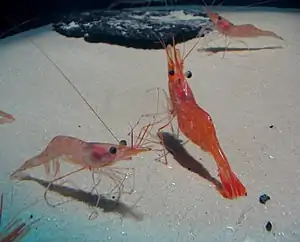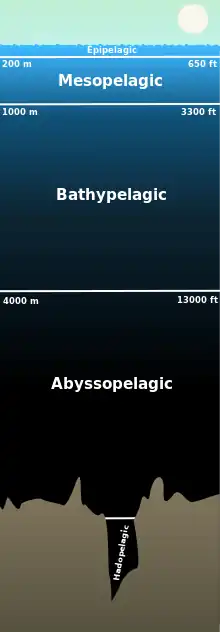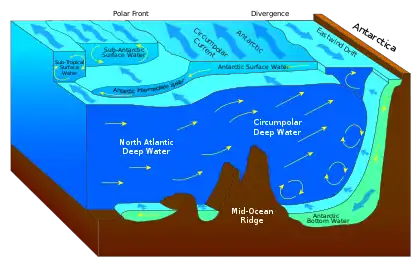

The Abyss Box is a vessel containing 16 litres (3.5 imp gal; 4.2 US gal) of water at the very high pressure of 18 megapascals to simulate the natural underwater environment of bathyal fauna living at about 1,800 metres (5,900 ft) below the surface.[1] It is on display at Oceanopolis aquarium in Brest, France.[1][2] It was designed by French researcher Bruce Shillito from Pierre and Marie Curie University in Paris.[3]
All the equipment maintaining the extreme pressure inside the Abyss Box weighs 600 kilograms (1,300 lb).[1] The device keeps deep-dwelling creatures alive so they can be studied, especially regarding their adaptability to warmer ocean temperatures.[1] Currently the Abyss Box houses only common species of deep sea creatures including a deep sea crab, Bythograea thermydron and a deep sea prawn, Pandalus borealis, which are some of the hardier species with a higher survival rate in depressurized environments.[4] The fauna on display were collected by Victor 6000, a specialised remotely operated vehicle (ROV).[5]
See also
References
- 1 2 3 4 Amos, Jonathan (18 February 2012). "'Abyss Box' to keep deep animals". BBC News.
- ↑ Hannah Hoag, Wired Magazine, 06.19.12 ABYSS BOX DISPLAYS DEEP-SEA ANIMALS UNDER PRESSURE
- ↑ Jennifer Welsh, Deep Sea Life On View in 'Abyss Box' NBC News, 2/21/2012
- ↑ The age of Aquarius: Inner space is almost as hard to explore as outer space The Economist, March 31, 2012
- ↑ "Les abysses". Océanopolis (in French). Retrieved 2023-06-23.
External links
- Deep Sea Foraminifera – Deep Sea Foraminifera from 4400 metres depth, Antarctica - an image gallery and description of hundreds of specimens
- Deep Ocean Exploration on the Smithsonian Ocean Portal
- Deep Sea Creatures Facts and images from the deepest parts of the ocean
- How Deep Is The Ocean Archived 2016-06-15 at the Wayback Machine Facts and infographic on ocean depth

